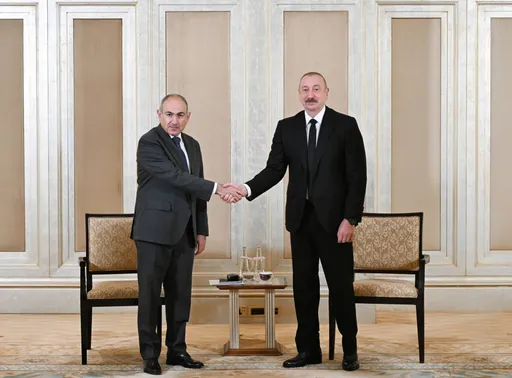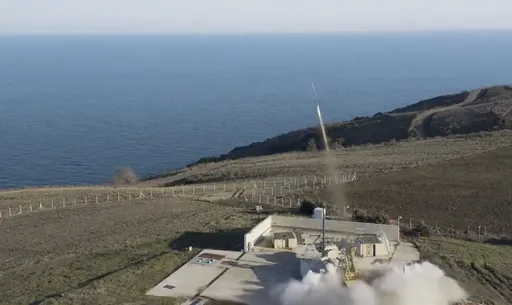A controversial memorial to Hungary’s ‘occupation’ by Nazi Germany has been the site of an ongoing demonstration by Budapest’s Jewish community since 2014, but Hungarian authorities have removed items put in place by demonstrators in recent months, causing further contention.
The memorial, found in downtown Budapest’s Liberty Square, features Germany’s imperial eagle, meant to represent Nazi Germany, attacking the Archangel Gabriel, the stand-in for Hungarian victims of Nazi war crimes.
Many in Hungary’s Jewish community feel the monument is in bad taste. Since the memorial was unveiled, people have come to the site to place impromptu photos and texts relating personal stories to commemorate Jewish Hungarians who were sent to Nazi death camps by a short-lived Hungarian government.
For those placing these remembrances on Liberty Square, the memorial doesn’t represent reality.
“Members of my family were sent to die with the full consent of the Hungarian government,” a Hungarian who was present at the memorial told TRT World, asking for their name be withheld due to the sensitivity of the subject. “Hungary was an ally of the Nazis, not a victim.”
Sordid, complicated past
Hungary under the Horthy government, which was in power from 1920-44, maintained an alliance with Nazi Germany, going so far as to implement laws mirroring the anti-Jewish Nuremberg laws.
While it was allied with Nazi Germany, it did not participate in exporting its Jewish citizens to death camps.
It wasn’t until March 1944 that Nazi Germany invaded, little more than a year before the war ended, after it became known to the Nazis that Hungary was speaking to allied forces about a surrender.
After the Nazi invasion, Horthy remained the head of state, but a government sympathetic to the Nazis – ran by the Arrow Cross party, a Hungarian fascist group – was installed.
The Arrow Cross party’s assumption of power power led to the mass deportation of Hungary’s Jewish population. By July 1944, approximately 440,000 Jewish Hungarians had been deported to Auschwitz alone.
By the end of the Holocaust, roughly 565,000 Hungarian Jews had been murdered, according to Israeli Holocaust remembrance centre Yad Vashem.
Hungary’s complicated history with the Second World War – and allegations that the government is whitewashing its role in the destruction of Hungary’s Jewish population – extends beyond Liberty Square.
Hungarians not ‘blameless’
A long-planned museum called the House of Fates, which cost millions of dollars by the time it was completed in 2015, sits awaiting its opening day.
Found next to a busy road in Budapest’s Eighth District, on the former site of a railroad station used to deport Jewish Hungarians to death camps, the gigantic Star of David suspended between two towers that serves as the House of Fate’s calling card is impossible to miss.
But some historians have raised concerns the museum, like the monument at Liberty Square, downplays Hungary’s complicity in the Holocaust.
The House of Fates was first proposed in 2013 by members of the government. It was originally conceptualised by Maria Schmidt, former adviser to Prime Minister Viktor Orban, who was instrumental in the creation of Budapest’s House of Terror museum, which has been accused of downplaying the Arrow Cross party’s atrocities in favour of placing blame on the Soviet-allied socialist government that ruled Hungary from the end of WWII until 1989.
That following year, authorities met with authorities on the Holocaust to discuss their plan for the museum’s exhibition. Their plans were met with concern and criticism.
Schmidt said in 2014 that if she got it right, the museum would be “A story of love between Hungarian Jews and non-Jews” that has “survived everything”.
Schmidt was removed from the project and Slomo Koves, a rabbi affiliated with the Hasidic Chabad movement in Hungary, was given the task of reimagining the House of Fates, but controversy remains.
Though it is unclear how much of Schmidt’s vision remains, Holocaust authorities remain unconvinced by the updated plans.
“Particularly missing is the role played by Hungarians in the persecution of their Jewish neighbours. The museum concept clearly avoids addressing the role and responsibility of Miklos Horthy and other Hungarian leaders of that era for the plight of the nation's Jews, and their eventual abandonment to the hands of Nazi Germany,” Dr Robert Rozett, head of Yad Vashem’s libraries, wrote in a statement on the museum in 2018.
Three historians who refused to be involved with the House of Fates resigned or were removed from their posts at the Budapest-based Milton Friedman University, which is run by Chabad, in August.
Attila Novak, one of the historians, commented that the essence of the House of Fates is “not established. We can’t see the outcome”, the Washington Post reported.
The Hungarian government did not respond to requests for comment. The House of Fates is currently expected to open in 2021.
























